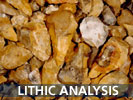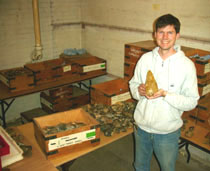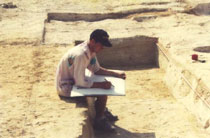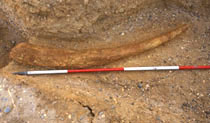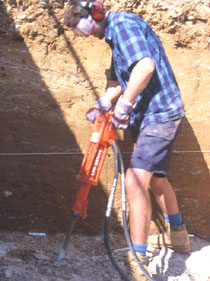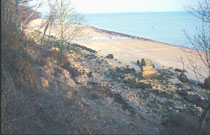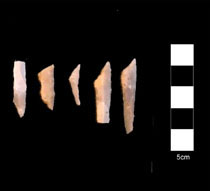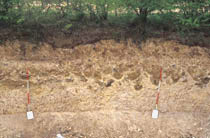| Previous projects | |
Stopes Palaeolithic Project The main project aims were to examine the massive collection of artefacts made by Henry Stopes in the Swanscombe area in the late 19th century, to identify the locations of his finds, and to investigate whether any significant sites discovered by him remain in the present day. (More) |
|
Boxgrove, Chichester My involvement started in September 1983, as a 1st-year undergraduate on the first funded trial excavation, when the presence of the intact land-surface was established beyond doubt, and continued as the project grew through the early 1980s and 1990s. At Boxgrove I cemented my interest in the early British Palaeolithic and in experimental flint-knapping (More) |
|
Swan Valley Community School, Swanscombe Construction of a new school at Swanscombe led to the discovery and investigation of river gravels c. 400,000 years old, equivalent to those that produced the Swanscombe Skull, rich in lithic artefacts, and containing faunal remains including the tusk of an extinct form of elephant. (More) |
|
Red Barns, Portsmouth The site was discovered and excavated in the mid 1970s. My work took place in 1997–1998 and consisted of a full analysis of the huge lithic collection, together with project-managing analysis of the palaeo-environmental material and producing a final site report. The site proved to be essentially undisturbed, and molluscs in sediment samples retained from the original excavation helped reconstruct the environment and date the site to c. 300,000 years old (More) |
|
Priory Bay, Isle of Wight Numerous handaxes have been found on the beach since the early 20th century. These were thought to originate from Pleistocene deposits capping the cliff, but these deposits had never been properly investigated. Since the cliffs are vulnerable to erosion, I was contracted by English Heritage to direct a field evaluation in 2001 to investigate the deposits in more detail, and determine whether they contained significant Palaeolithic remains — which they did (More) |
|
Bowman's Farm, Romsey Monitoring of trenching for a gas pipeline in 1990 near Romsey led to the discovery of circular charcoal-filled trenches c. 6m diameter associated with undisturbed scatters of flint artefacts. Carbon-14 dating of some charcoal from one feature confirmed a Mesolithic date. My work focused on establishing a methodology for excavation of the site, and analysis of the flintwork, which confirmed its Mesolithic nature. This is on the face of it strong evidence for a Mesolithic structure, either a dwelling hut or an animal pen (More) |
|
PhD, Baker's Hole, Kent My PhD, completed in 1996, involved investigation of the Levalloisian site of Baker's Hole. As well as examining and analysing the surviving lithic collections from the site, archival research and field survey work were carried out. This led to the discovery that the main Levalloisian site was not where thought, and that parts of it still survived, although were under imminent threat by the Channel Tunnel Rail Link (More) |
|
|
|
|
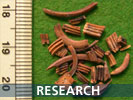 |
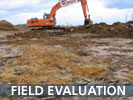 |
 |
 |

